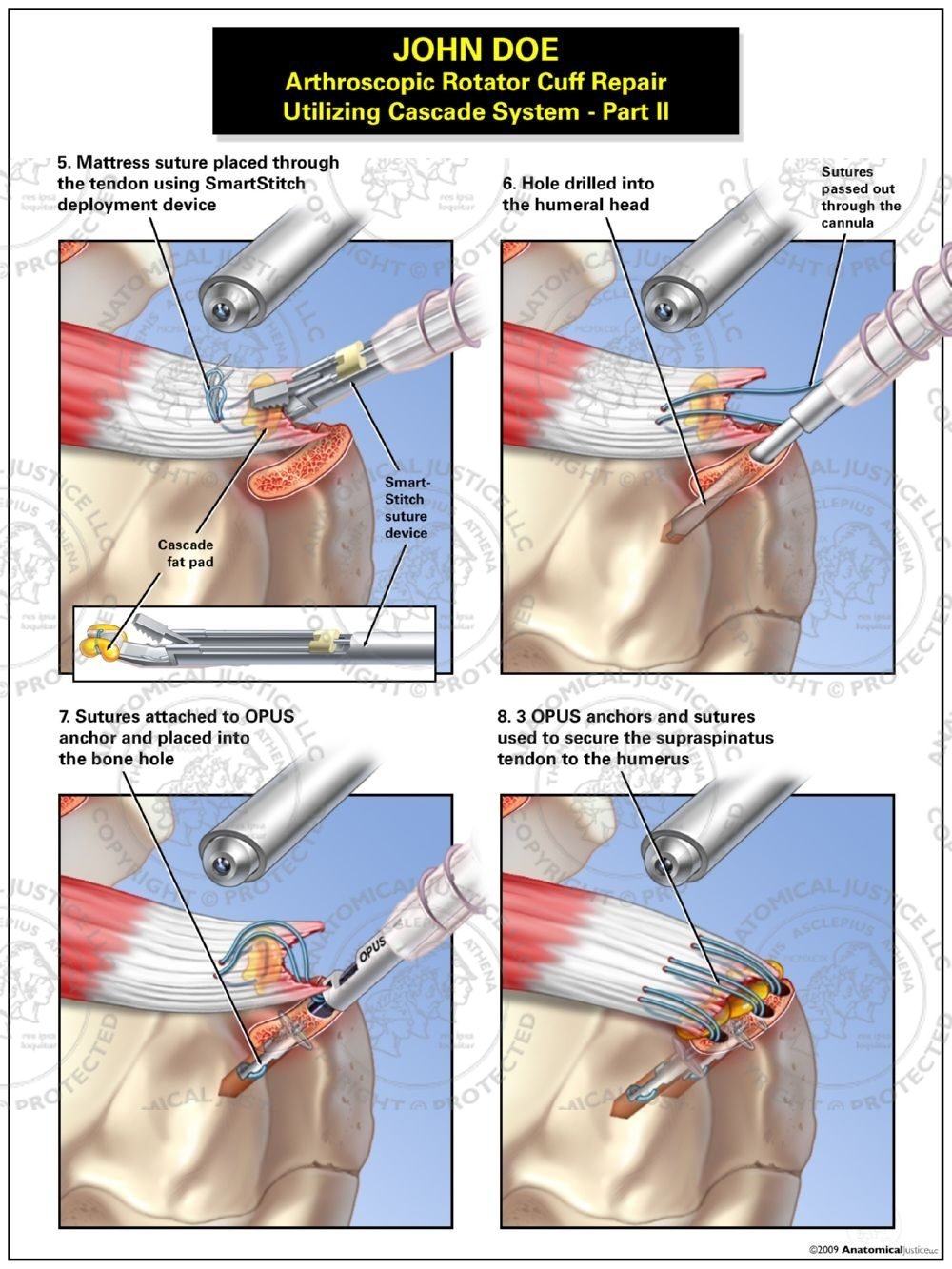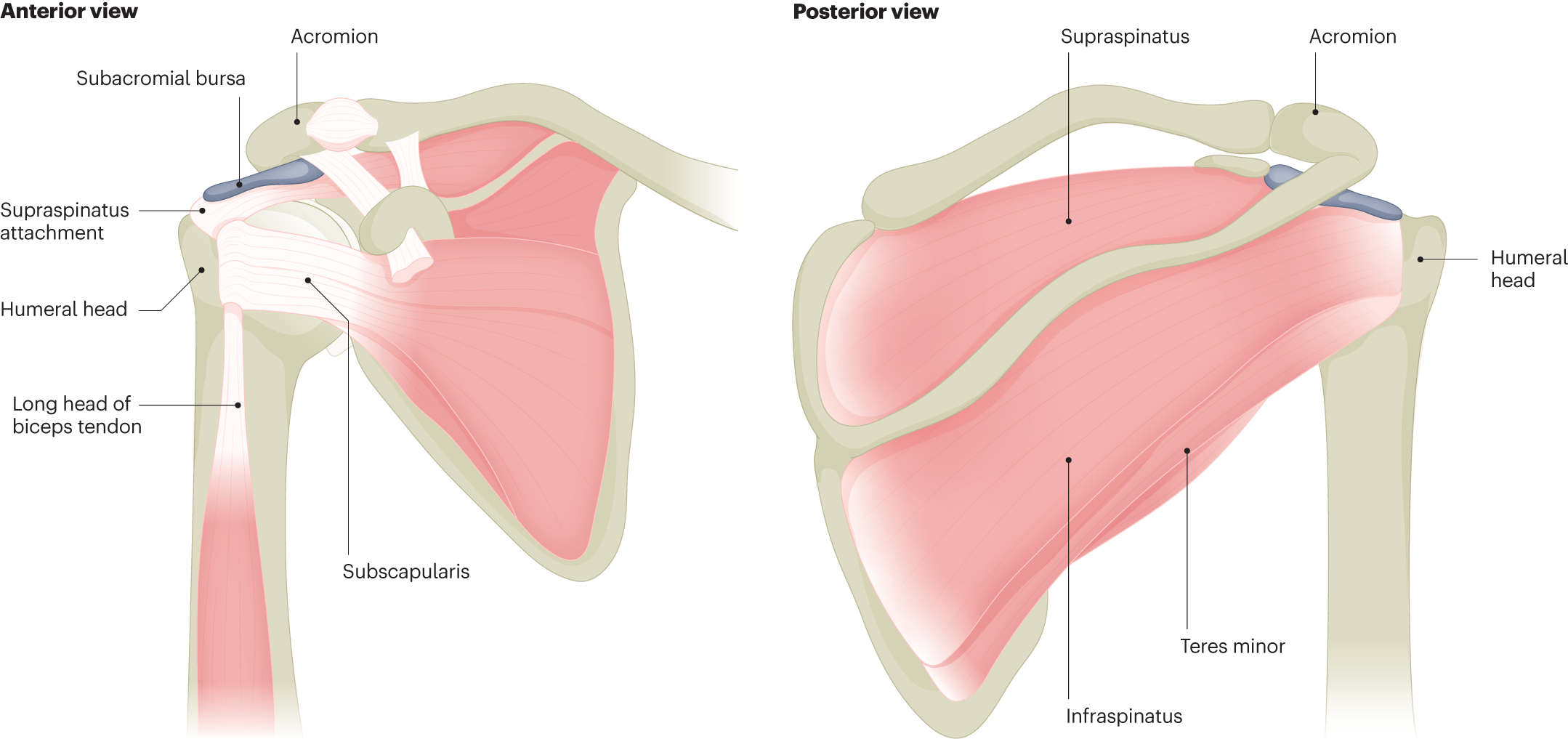Arthroscopic Rotator Cuff Repair Utilizing Cascade System - Part II

This exhibit features four illustrated arthroscopic steps to repair a series of left shoulder injuries. This exhibit is a continuation of part one in the series. Mattress sutures are placed through the tendon using a SmartStitch deployment device. The platelet-rich fibrin matrix (PRFM) implant is then secured between the tendon and bone. Holes are drilled into the humeral head, and sutures are attached to the OPUS anchor. The anchors are then placed into the bone holes. Three OPUS anchors secure the supraspinatus tendon to the humerus to complete the surgical construct.

Rotator cuff repair using a bioresorbable nanofiber interposition scaffold: a biomechanical and histologic analysis in sheep - ScienceDirect

PDF) Early postoperative pain as a risk factor of shoulder stiffness after arthroscopic rotator cuff repair

PDF) Effects of one-month continuous passive motion after arthroscopic rotator cuff repair: Results at 1-year follow-up of a prospective randomized study

Cells, Free Full-Text

The Efficacy of Platelet-Rich Plasma and Platelet-Rich Fibrin in Arthroscopic Rotator Cuff Repair: A Meta-analysis of Randomized Controlled Trials - Eoghan T. Hurley, Daren Lim Fat, Cathal J. Moran, Hannan Mullett, 2019

Combined therapy of platelet-rich plasma and basic fibroblast growth factor using gelatin-hydrogel sheet for rotator cuff healing in rat models, Journal of Orthopaedic Surgery and Research

Primary Double-Pulley SLAP Repair in an Active-Duty Military Population With Type II SLAP Lesions Results in Improved Outcomes and Low Failure Rates at Minimum Six Years of Follow-up - ScienceDirect

Rotator cuff tears Nature Reviews Disease Primers

JCM, Free Full-Text

Arthroscopic rotator cuff repair: Double-row and transosseous equivalent techniques - ScienceDirect